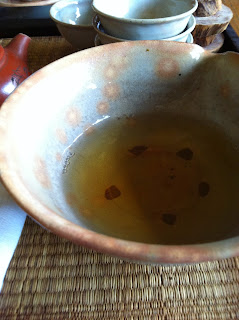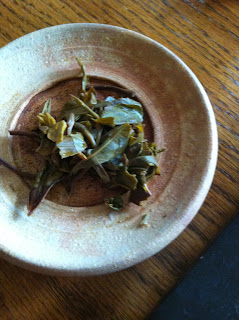It is cold here on the prairies and little is more satisfying than a good hardy 2nd Flush Darjeeling to start the day. The touch of aged oolong and many decades aged puerh is also a real treat for this time of year. One pounded through a self-re-roasted 15ish years oolong over the last few months. There is little aged oolong left in the old tea cupboard. What is left is all still of unknown quality in its original Taiwanese signature vacuum packaging- a tea post for another day, no doubt. Old puerh tea is set aside for slow gong fu like enjoyment- not economically practical for everyday enjoyment. So often Second Flush Darjeeling becomes a real staple.
The following was a favorite of the 2013s after sampling tons from Lochan Tea...
Dry leaves smell of strong deep very sweet fruit odours.
The first pot is that of sweet distinctly raisin tastes. These tastes are very clean and leave a fresh aftertaste in the throat. The mouthfeel is stimulated and felt in the upper and mid throat as a slight raisiny-menthol lingers there. The sensation pushes a pool of saliva to the mid throat.
Dry leaves smell of strong deep very sweet fruit odours.
The first pot is that of sweet distinctly raisin tastes. These tastes are very clean and leave a fresh aftertaste in the throat. The mouthfeel is stimulated and felt in the upper and mid throat as a slight raisiny-menthol lingers there. The sensation pushes a pool of saliva to the mid throat.
The second is more strong and robust in taste it carries a balance of deeper very light bitter raison tastes slightly more dominant than sweeter lighter tastes. The overall taste is quite clean though. The mouthfeel is heavier in the mouth and ends nice and sticky. The aftertaste has a bitter deep barely menthol taste. The qi is light and gently moves throughout the body and mind.
Third has deep raison light bitters dominating with still a light fruity edge. The mouthfeel continues in the throat and is still light but stimulating. The aftertaste is of deep grape tastes. This tea is very clean, bright, deep, nice.
When one went to order this tea it was all but sold out. Ended up settling with another Second Flush that has proven marvelous over many different brewing perimeters.
Peace
Peace






















































